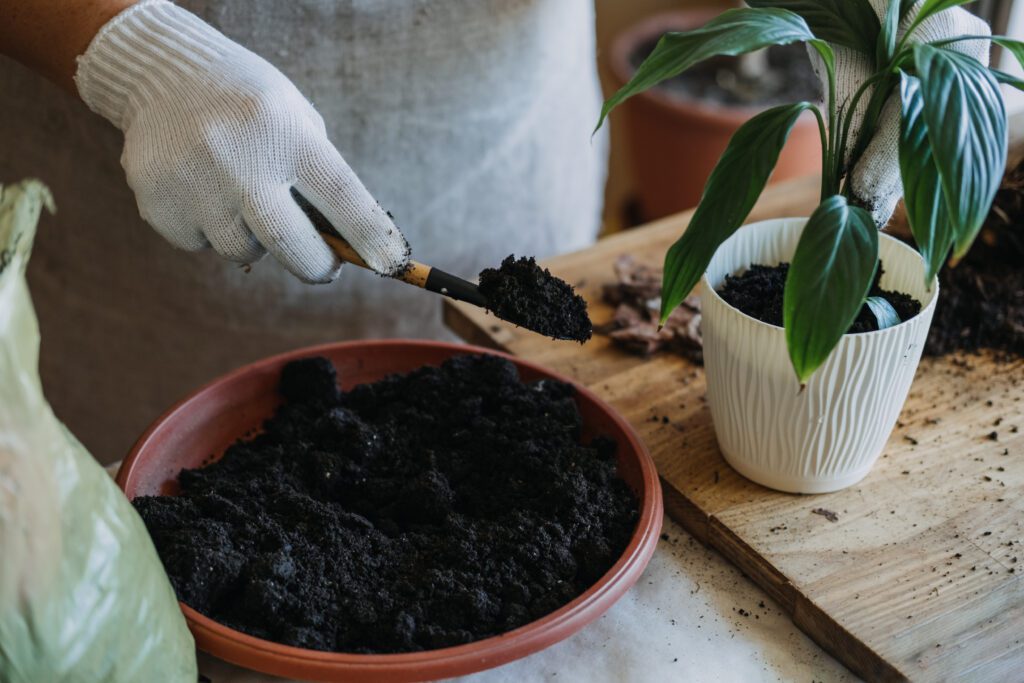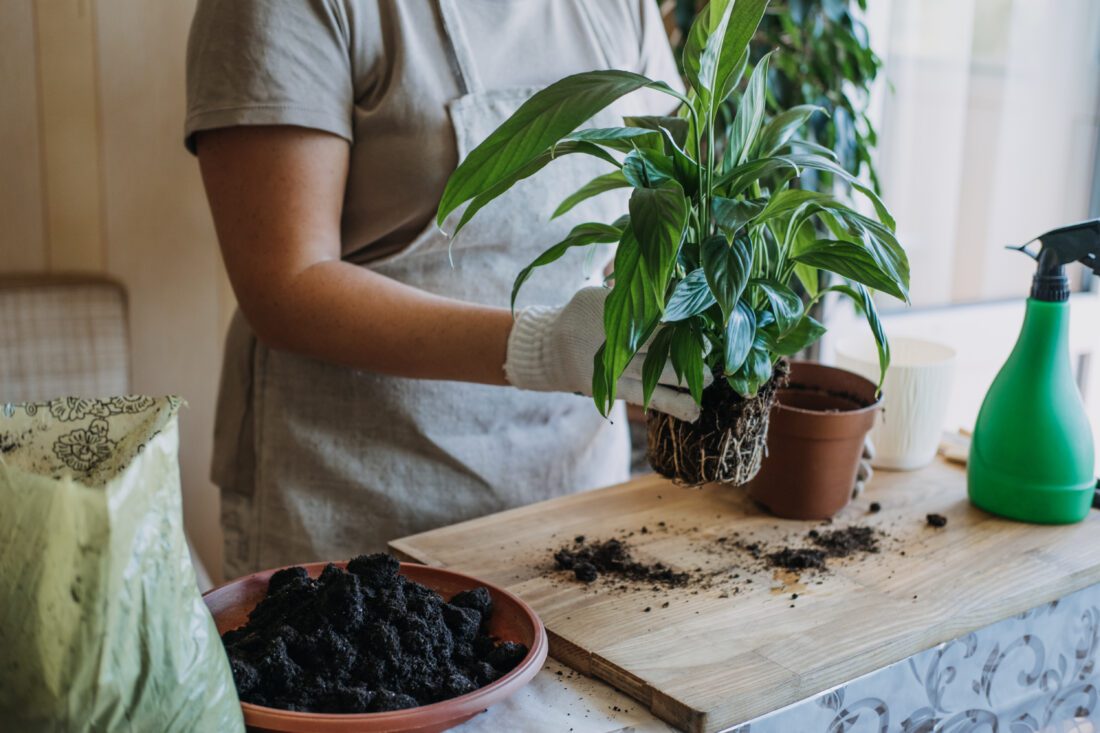September 10, 2024
Repotting Houseplants: A Simple Guide to Help Your Plants Thrive
Houseplants bring life and color to our homes, but like any living thing, they need the right environment to flourish. One of the key aspects of caring for your indoor plants is knowing when and how to repot them. Repotting can seem daunting, but it’s a straightforward process that can make a world of difference for your plant’s health. Let’s walk through the essentials of repotting, including how to tell when it’s time, why fall is an ideal season for the task, and some helpful tips to ensure your plants thrive.
How to Know When It’s Time to Repot
Houseplants grow over time, and as they do, their roots can become crowded in their current pots. There are a few signs to look out for that indicate it’s time to give your plant a bit more space:
- Roots are Growing Out of the Drainage Holes: If you notice roots poking out from the bottom of the pot, it’s a clear sign your plant needs more room.
- Water Drains Quickly Through the Pot: When water runs right through the pot without being absorbed, it’s often because the roots have taken up most of the space, leaving little room for soil to hold moisture.
- The Plant Looks Top-Heavy or Outgrows the Pot: If your plant is starting to tip over or looks disproportionately large for its pot, it’s likely time to move it to a larger container.
- Soil Dries Out Too Quickly: If you find yourself watering more often because the soil is drying out too fast, this might be due to a root-bound plant that’s outgrown its pot.
Why Fall is the Best Time to Repot
Fall is an ideal time for repotting houseplants, and here’s why:
Plants are Entering a Slower Growth Phase: In fall, many houseplants start to slow down as they prepare for the dormant winter months. Repotting at this time is less stressful for the plant because it’s not in a period of rapid growth. This allows the plant to settle into its new pot and root system more comfortably.
Less Intense Sunlight: With the sun less intense in fall, your plants are less likely to experience the shock that can come with repotting during the peak growing season in spring and summer.
Preparing for Winter: By repotting in fall, you give your plants a fresh start with new soil, which is essential as they head into the winter months when light levels are lower, and growth slows.

Steps for Repotting Your Houseplant
Now that you know why fall is the perfect time to repot, let’s go over the basic steps:
- Choose the Right Pot: Select a pot that is 1-2 inches larger in diameter than the current one. Make sure it has drainage holes to prevent waterlogging, which can lead to root rot. Need help choosing the right container for you? Watch our video to get you started! You can also consider ‘cache potting’ to help with this as well.
- Prepare the Plant: Water your plant a day before repotting to reduce stress and make it easier to remove from the pot.
- Remove the Plant from the Pot: Gently tip the plant out of its current pot. You may need to tap the sides or use a tool to loosen the soil around the edges.
- Loosen the Roots: If the roots are tightly bound, gently tease them apart. This encourages them to spread out in the new pot, helping the plant to establish itself more effectively.
- Add Fresh Soil: Place a layer of fresh potting mix in the bottom of the new pot. Position your plant in the center and fill around it with more soil, leaving a small space at the top for watering.
- Water Thoroughly: After repotting, water the plant well to help the soil settle around the roots. Make sure excess water drains out to avoid waterlogging. For long-term watering tips, especially as we go into the cooler months, check out our blog here!
- Place in a Suitable Location: After repotting, place your plant back in its usual spot. It may take a few weeks for it to adjust to its new home, so be patient and avoid overwatering during this time.
Additional Tips for Successful Repotting
- Use High-Quality Potting Mix: A good potting mix is essential for providing the right nutrients and drainage for your plant. Avoid using garden soil, which can be too dense for houseplants.
- Be Gentle: Handle your plant and its roots with care to avoid damaging them during the repotting process.
- Don’t Overpot: Moving to a pot that’s too large can lead to overwatering issues because the soil will retain moisture longer than the plant can use it. Stick to a pot just two inches larger than your current one.
Repotting your houseplants is an essential part of keeping them healthy and happy. By following these tips and choosing the right time, you’ll give your plants the best chance to thrive. Happy gardening!
How to Repot Houseplants | FAQs
What is the best time of year to repot my houseplants for healthy growth?
Fall is ideal because plants are slowing their growth, reducing transplant shock. Less intense sunlight and fresh soil help plants settle before winter.
How can I tell if my houseplant needs to be repotted?
Look for roots growing out of drainage holes, water draining too fast, a top-heavy appearance, or soil drying quickly—classic signs of being root‑bound.
How much larger should the new pot be when repotting a houseplant?
Choose a pot just 1–2 inches wider than the current one. A dramatically larger pot can lead to overwatering, as excess soil retains moisture the plant can’t us.
What are the step-by-step instructions for repotting a houseplant?
Water the plant a day before repotting to reduce stress. Gently remove it from the old pot, tease out any roots that need to be loosened, add fresh soil, and water thoroughly afterward.
What care should I provide to my houseplant after repotting it?
Water well, ensure proper drainage, and place the plant in its usual location. Give it time—plants may take a few weeks to fully adjust to their new pot.

